- Home
- Report of Delicious Sake Serving Restaurants, My Three Meals, fukushima
- “Izakaya Yosaku”, serving Aizu foods and Sake “Hanaharu”
“Izakaya Yosaku”, serving Aizu foods and Sake “Hanaharu”
- 2018/2/14
- Write comment
Good evening!
Thank you very much for visiting this blog.
Today’s topic is my night out in a town of Aizu as well as the last article.
Go in Aizu-Wakamatsu Castle’s town
After I left “Izakaya Aizu”, I walked on the National Route 118 which is a wide road connecting Aizu-Wakamatsu Castle and Aizu-Wakamatsu Station to the castle’s direction.
I thought that it would be nice to see the castle at night while looking for the next Izakaya.
The street I walked on started from “Kita Demaru” gate of the castle to the north.
It’s said that there were samurai residences along the street.
Along the street, there is a site called “Wakamatsu-Jo Ato Koka Machiguchi Kakumon Ato” that there used be a stonewall to divide the inside and outside of the castle.
In addition, there is a monument to tell that there was a residence of Tanomo Saigo, the top minister of Aizu in Edo era.
There is a story that all 21 women who are the family of Saigo and who worked for Saigo’s home, killed themselves before the battle of Aizu-Wakamatsu Castle not to encumber the war.
Tanomo Saigo was a clever person.
It is said that he always gave important advices to the Lord, Katamori Matsudaira at every Aizu’s emergency.
However, Katamori excluded Tanomo’s words every time, and Tanomo was expeled from Aizu with his son when the war got into the last minutes.
After that, Tanomo joined Takeaki Enomoto’s group to fight Hakodate War.
He finally became free officially after the war.
He did some important roles after the war such as the priest of Nikko Toshogu shrine.
When he was working at Toshogu, he lost his son for a disease, and adopted his nephew, Shiro Shida.
He made Shiro to call himself Shiro “Saigo”.
Some people should have heard of his name “Shiro Saigo” as one of the founders of the present Judo.
As well as such historical episodes, this area has some traditional facilities such as a Japanese sake “Sharaku”’s maker “Miyaizumi Meijo” (the building was under construction when I visited there), or “Kojuan” which is famous for juwari soba.
“Izakaya Ysaku” and itslimited sake “Hanaharu – direct from the maker”
Walking along the street to the north, there is “Sakaemachi”, where many restaurants and bars are.
It was hard to decide the bar for the next drink as there were many.
The one I chose at last is this.
“Izakaya Yosaku”.
A good appearance of Japanese traditional warehouse (Kura).
The inside was designed like an old Japanese private house which well matched the outside.
A staff of the bar guided me to a counter seat, and I looked at the menu to see sake.
It seemed that there are many labels of Japanese sake brewed in Aizu.
I was having a difficulty to choose one from those, and suddenly I found that the sake in the last line had a comment;
“Available only at Izakaya Yosaku”!!
I immediately ordered that one.
The name was “Hanaharu – direct from the maker”.
After a while, “Hanaharu” arrived.
The scent was sweet like Japanese soda pops.
…… and the taste was so good!
I can’t express exactly what it’s like; it should be smooth and light, but not too sharp. The image is less-sweet lemonade.
As the name “Hanaharu” (means “flower spring”) shows, the sake brought me a kind of happiness in my mouth.
Food of Yosaku
The next order was food to go with sake.
I wanted to have some unique food of Aizu.
I found “Aizu’s well-known product herring with Japanese pepper”, and ordered it.
It tasted good. Herring and Japanese pepper is so match and good for the sake.
Also “Yosaku Hanako” whose name caught my eyes.
I enjoyed the sake and food remembering what I saw on the day.
“Suehiro – Mizuha” served by the Hotel”
I stayed at “Yosaku” for about an hour, and I was too tired to go to the third bar so went back to the hotel.
My accommodation plan was “with Japanese sake for evening drink”, so I received a little glass and a sake bottle when I checked in.
The sake was this;
“Suehiro – Mizuha”.
This is made by a maker “Suehiro Shuzo” which I introduced in the last blog.
According to Suehiro Shuzo’s website, “Mizuha” means a goddess of water.
The taste was rather dry, but when it went on the tongue, it left sweetness and deep flavor.
The scent was not too strong.
It was enjoyable enough with itself, no other food or drink.
My first day of Fukushima trip finished with Aizu’s history and good sake.
The next blog will be about “Ouchi Juku”.
It's our great pleasure if this article is helpful for you.
Comment (0)
No trackbacks yet.











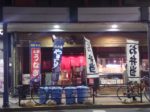
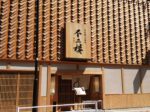
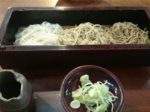
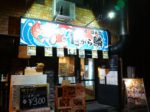
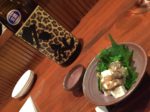
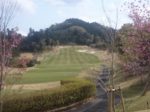
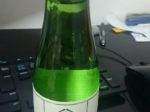
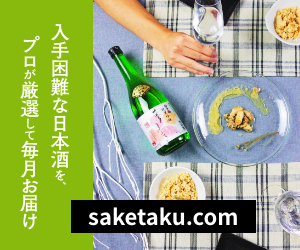
No comments yet.